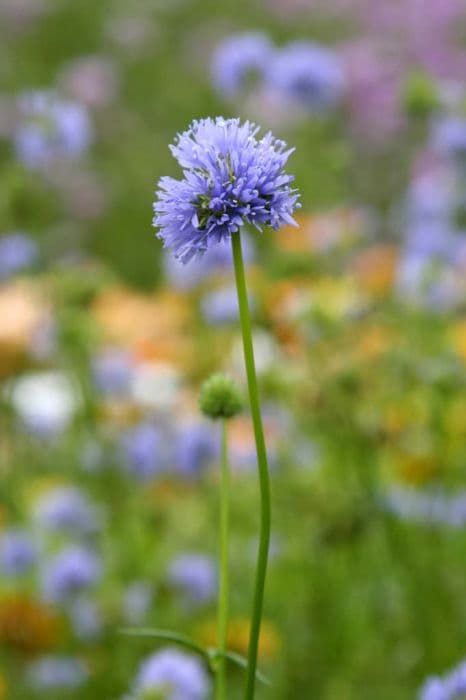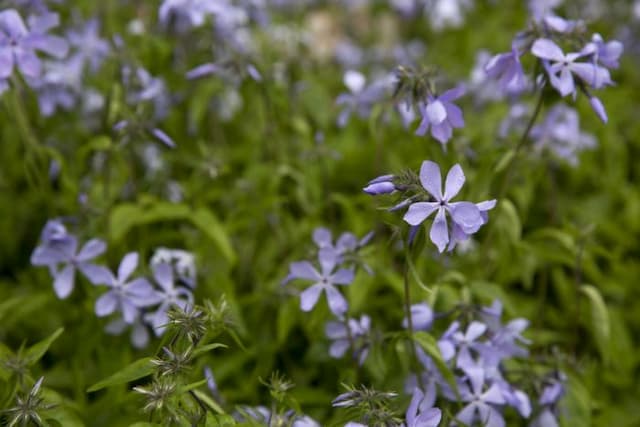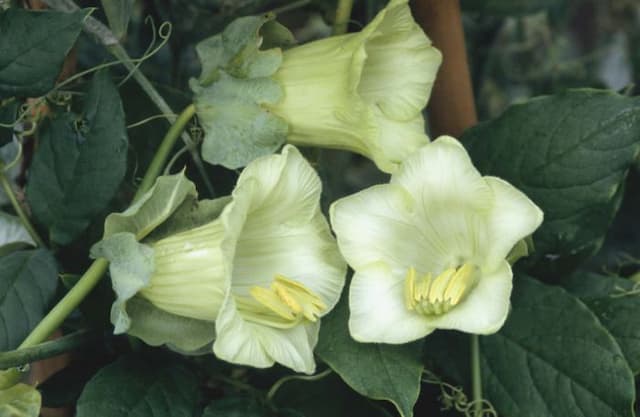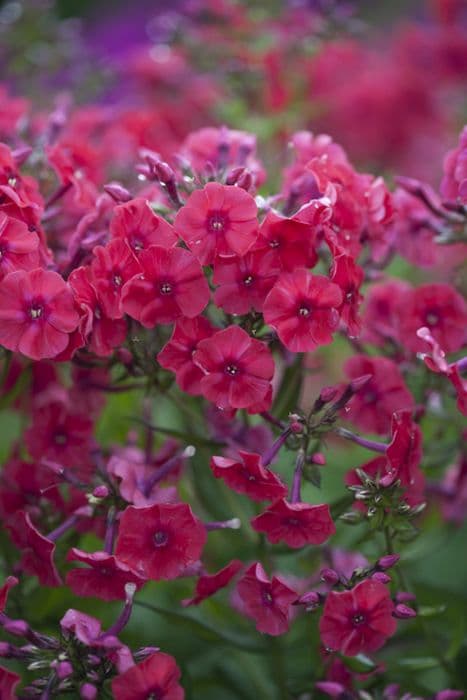Magic Flower Cantua buxifolia

ABOUT
The Cantua buxifolia, commonly known as the Sacred Flower of the Incas or simply Inca flower, is a visually striking plant widely admired for its beautiful flowering display. The Inca flower possesses an upright, bushy habit with a lush, evergreen foliage made up of small, shiny, oval leaves that serve as a vibrant backdrop to its colorful blooms. The most outstanding feature of this plant is its stunning tubular flowers, which are known to dangle gracefully from the stems. These flowers exhibit a vivid palette that primarily includes shades of pink, red, and sometimes a purplish hue, each bloom tipped with contrasting colors that add to their allure. The blooms are elongated and flared at the ends, resembling slender trumpets or bells that hang in clusters, giving a charming and eye-catching appearance. The flowering season of the Inca flower generates a spectacular visual impact, as the plant becomes festooned with these unique and radiant blossoms, which not only catch the eye but can also attract hummingbirds and other pollinators to the garden. The overall impression of the Inca flower is one of exotic beauty, with its combination of elegant foliage and brilliant floral display.
About this plant
 Names
NamesFamily
Plantaginaceae
Synonyms
Magic Flower, Sacred Flower Of The Incas, Qantu, Cantuta, Flor Del Inca
Common names
Cantua buxifolia Juss. ex Lam.
 Toxicity
ToxicityTo humans
Cantua buxifolia, commonly known as Qantu or Magic Flower, is not widely recognized for its toxicity to humans. There is scant information available regarding its potential toxic effects if ingested. As with many plants, it is generally advisable to avoid ingestion unless the plant is known to be safe. If any part of the Cantua buxifolia plant is ingested, and symptoms of poisoning occur, it is crucial to seek medical attention. However, specific symptoms of poisoning by this plant are not well-documented in the literature.
To pets
Cantua buxifolia, commonly referred to as Qantu or Magic Flower, does not have a well-established toxicity profile for pets such as dogs and cats. There is limited information suggesting that it is notably toxic to them. Nevertheless, to err on the side of caution, pet owners should prevent their pets from ingesting this plant. If a pet does ingest Cantua buxifolia and exhibits signs of distress or poisoning, it is essential to consult a veterinarian. Unlike for humans, there does not appear to be specific symptoms associated with pet poisoning from this plant in the existing literature.
 Characteristics
CharacteristicsLife cycle
Perennials
Foliage type
Evergreen
Color of leaves
Green
Flower color
Pink
Height
10 feet (3 meters)
Spread
6 feet (1.8 meters)
Plant type
Shrub
Hardiness zones
8
Native area
South America
Benefits
 General Benefits
General Benefits- Ornamental Value: Cantua buxifolia, commonly known as the Magic Flower or Sacred Flower of the Incas, is often used for its striking ornamental beauty, with vibrant tubular flowers that enhance the aesthetic of gardens and landscapes.
- Cultural Significance: The plant has historical and cultural importance in Andean traditions, where it is sometimes used in festivals and religious ceremonies.
- Habitat for Wildlife: The flowers of Cantua buxifolia provide nectar for hummingbirds and other pollinators, playing a role in supporting local biodiversity.
- Drought Tolerance: Being native to arid environments, the plant is well-adapted to drought conditions, making it ideal for water-conservative landscaping.
- Low Maintenance: The plant generally requires minimal care once established, making it suitable for gardeners of all skill levels.
- Soil Erosion Control: Cantua buxifolia can help in stabilizing slopes and controlling erosion, especially in its native habitats or similar environments.
 Medical Properties
Medical Properties- This plant is not used for medical purposes.
 Air-purifying Qualities
Air-purifying QualitiesThis plant is not specifically known for air purifying qualities.
 Other Uses
Other Uses- Cantua buxifolia, commonly known as the magic flower, has been used in traditional ceremonies and rituals in the Andes to bring good luck and ward off negative energies due to its vibrant flowers and the longstanding cultural beliefs associated with it.
- The long, tubular blossoms of the magic flower have served as natural containers for small items by indigenous people, with the dried flowers being utilized to hold seeds or other minute objects.
- The striking appearance of the magic flower makes it a popular ornamental plant in gardens and landscaping designs that aim to evoke a sense of magic and whimsy in their setting.
- Because of its significance in Incan mythology, the magic flower is sometimes used as a teaching tool in cultural education curricula to discuss the history and mythology of South America.
- The plant has been used in the dye-making process, where extracts from its flowers provide pigments for traditional textile work.
- In some Andean communities, the magic flower is incorporated into dance costumes and headpieces during cultural festivals, adding bright natural colors to the attire.
- Due to its symbolic association with love and heartache in Andean culture, the magic flower is occasionally used in folkloric storytelling and artistic expressions such as poetry and songwriting to convey deep emotions.
- The fibers from the stems of the magic flower have been experimentally used for crafting lightweight, biodegradable items, as part of sustainable material research.
- The wood from the magic flower's stems has been used to make small handcrafts and as a natural construction material in hobbyist model-making, due to its relative ease of carving and shaping.
- Cantua buxifolia's dried petals are occasionally included in potpourri mixes for a splash of color and as a reminder of the Andean flora in home décor elements.
Interesting Facts
 Feng Shui
Feng ShuiThe Magic flower is not used in Feng Shui practice.
 Zodiac Sign Compitability
Zodiac Sign CompitabilityThe Magic flower is not used in astrology practice.
 Plant Symbolism
Plant Symbolism- Unity and Togetherness: Cantua buxifolia, commonly known as the Magic Flower, is often seen as a symbol of unity and togetherness, as in its native habitat, it grows in clusters that create a stunning and cohesive display of colors.
- Sacredness: The Magic Flower holds deep sacred meanings to native cultures such as the Incas where it was revered and included in religious rituals and offerings to the sun god, Inti.
- Purity: The strikingly beautiful and delicate blossoms of the Magic Flower are often associated with purity and innocence, with the clearness of its colors representing clarity and sincerity of emotions.
- Love and Affection: In South America, the Magic Flower is traditionally used in celebrations of love and given as a representation of deep affection and romantic interest between partners.
- Endurance and Persistence: As a plant that thrives in high-altitude conditions in the Andes, the Magic Flower symbolizes endurance and the ability to persist through challenges and harsh environments.
 Water
WaterThe Magic Flower prefers consistent moisture, so it's important to water it when the top inch of soil feels dry to the touch. For a potted plant, this may mean watering with approximately 16-24 ounces of water weekly, depending on the size of the pot and environmental conditions. During the active growing season in spring and summer, watering frequency may increase, while in winter, it should be reduced. Always avoid waterlogged soil to prevent root rot—ensure the pot has good drainage. Never let the plant stand in water for prolonged periods.
 Light
LightThe Magic Flower thrives in full sun to partial shade. The best spot for this plant is a location where it can receive at least 6 to 8 hours of direct sunlight daily. If grown indoors, a south or west-facing window is ideal to provide adequate light for flowering. Too little light may reduce blooming and cause leggy growth.
 Temperature
TemperatureThe Magic Flower is best suited to temperate climates and can tolerate a temperature range from about 40°F to around 80°F. It prefers a typical daytime temperature of about 65°F to 75°F and a slight drop at night. Avoid exposing the Magic Flower to temperatures below 40°F, as it is not frost-hardy and can be damaged by cold.
 Pruning
PruningPruning the Magic Flower helps maintain its shape and encourage bushier growth. Prune back leggy branches and spent flowers after blooming to stimulate new growth. The best time to prune is at the end of the blooming cycle or in late winter before new growth starts. Pruning once a year is typically sufficient for maintaining plant health and form.
 Cleaning
CleaningAs needed
 Soil
SoilThe Magic Flower prefers well-draining, sandy loam with a slightly acidic to neutral pH between 6.0 and 7.5. A soil mix with two parts loam, one part sand, and one part peat or compost is ideal for Cantua buxifolia.
 Repotting
RepottingThe Magic Flower should be repotted every 2-3 years or when it has outgrown its current container. Use fresh soil mix when repotting to replenish nutrients.
 Humidity & Misting
Humidity & MistingCantua buxifolia, or the Magic Flower, thrives best in moderate to high humidity environments, ideally around 50-70%.
 Suitable locations
Suitable locationsIndoor
Bright light, well-draining soil, moderate humidity.
Outdoor
Full sun, well-drained soil, frost-free area.
Hardiness zone
9-11 USDA
 Life cycle
Life cycleCantua buxifolia, commonly known as the Peruvian magic flower or Inca's flower, begins its life cycle when a seed germinates, typically in well-draining, sandy soil under full or partial sun exposure. Once the seedling emerges and establishes itself, it enters a vegetative growth phase, where it develops a sturdy stem and lush leaves. Vegetative growth continues until the plant reaches maturity, at which point it begins its reproductive phase, characterized by the production of its signature tubular, brightly colored flowers, usually in hues of pink, red, or yellow. These flowers are pollinated by hummingbirds and other pollinators, leading to the formation of seed capsules. After pollination, seeds develop and, upon maturity, are dispersed from the dehiscent capsules, allowing the cycle to begin anew. Throughout its perennial life span, Cantua buxifolia may undergo dormant periods, especially during cooler or drier seasons, but it will resume growth with the return of favorable conditions.
 Propogation
PropogationPropogation time
Spring-Early Summer
The most favored way to propagate the Magic Flower, or Cantua buxifolia, is through semi-hardwood cuttings taken during the summer months when the plant is actively growing. To ensure the best chances of success, select healthy stems that are not flowering. Cut segments around 4 to 6 inches (10 to 15 centimeters) long and strip the leaves from the bottom half. Dipping the cut end in rooting hormone can enhance root development. Once prepared, insert the cuttings into a pot filled with a mix of perlite and peat, ensuring at least two nodes are buried in the growing medium. Keep the pot in a sheltered location with indirect sunlight, maintaining moisture without waterlogging. With consistent care, roots typically develop within a few weeks, after which the new Magic Flower plants can eventually be transitioned to individual pots or garden spaces.









